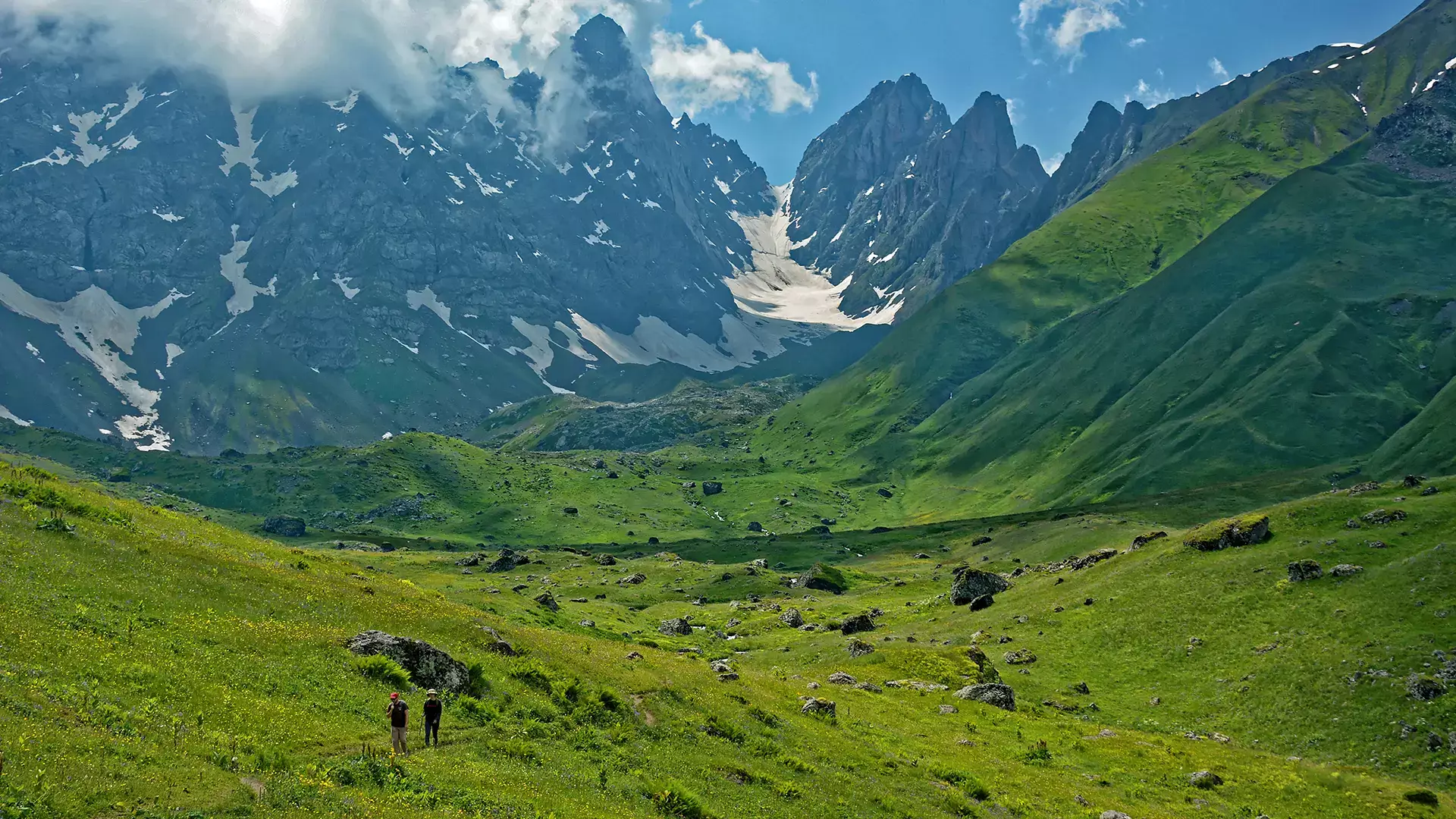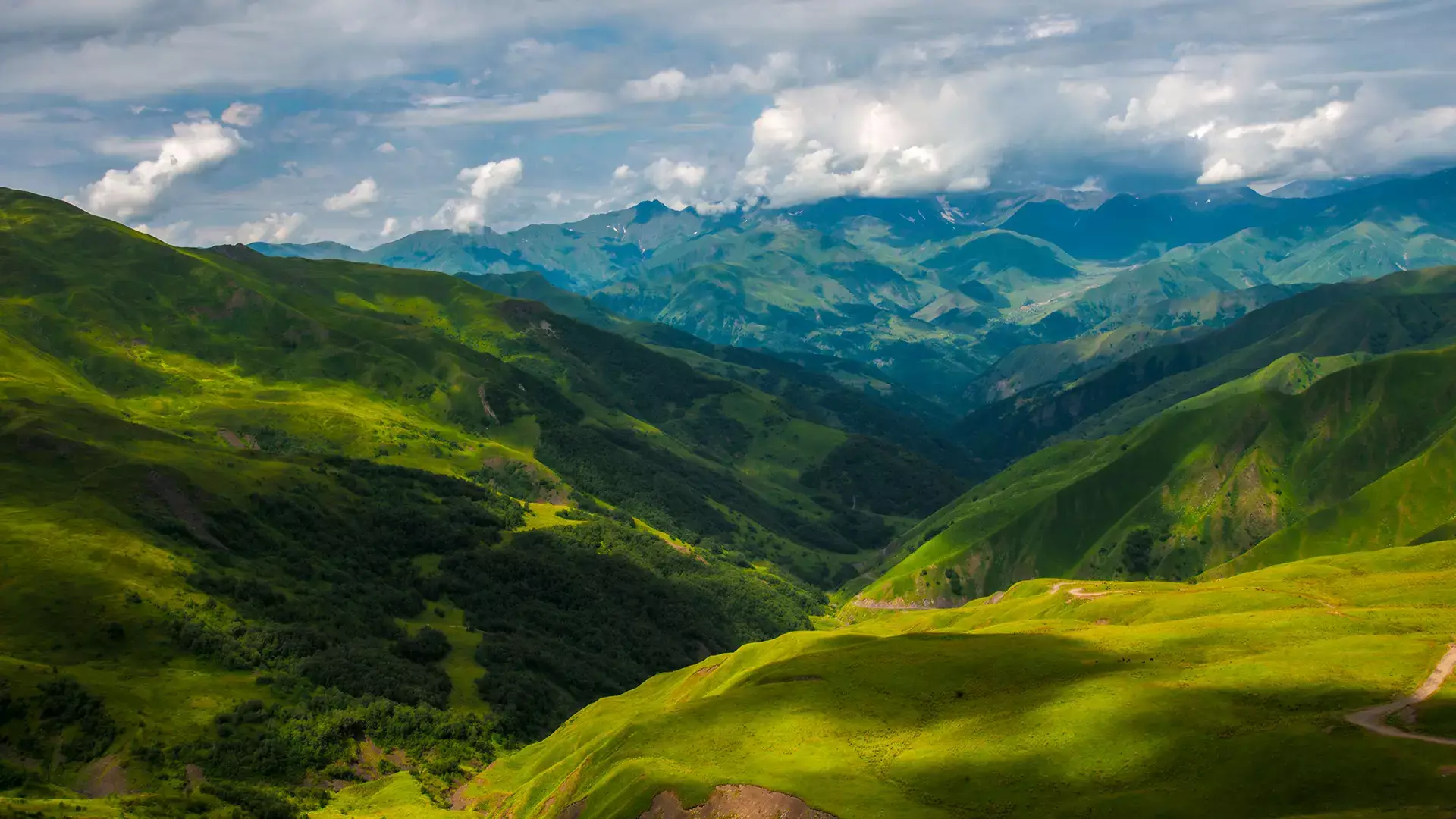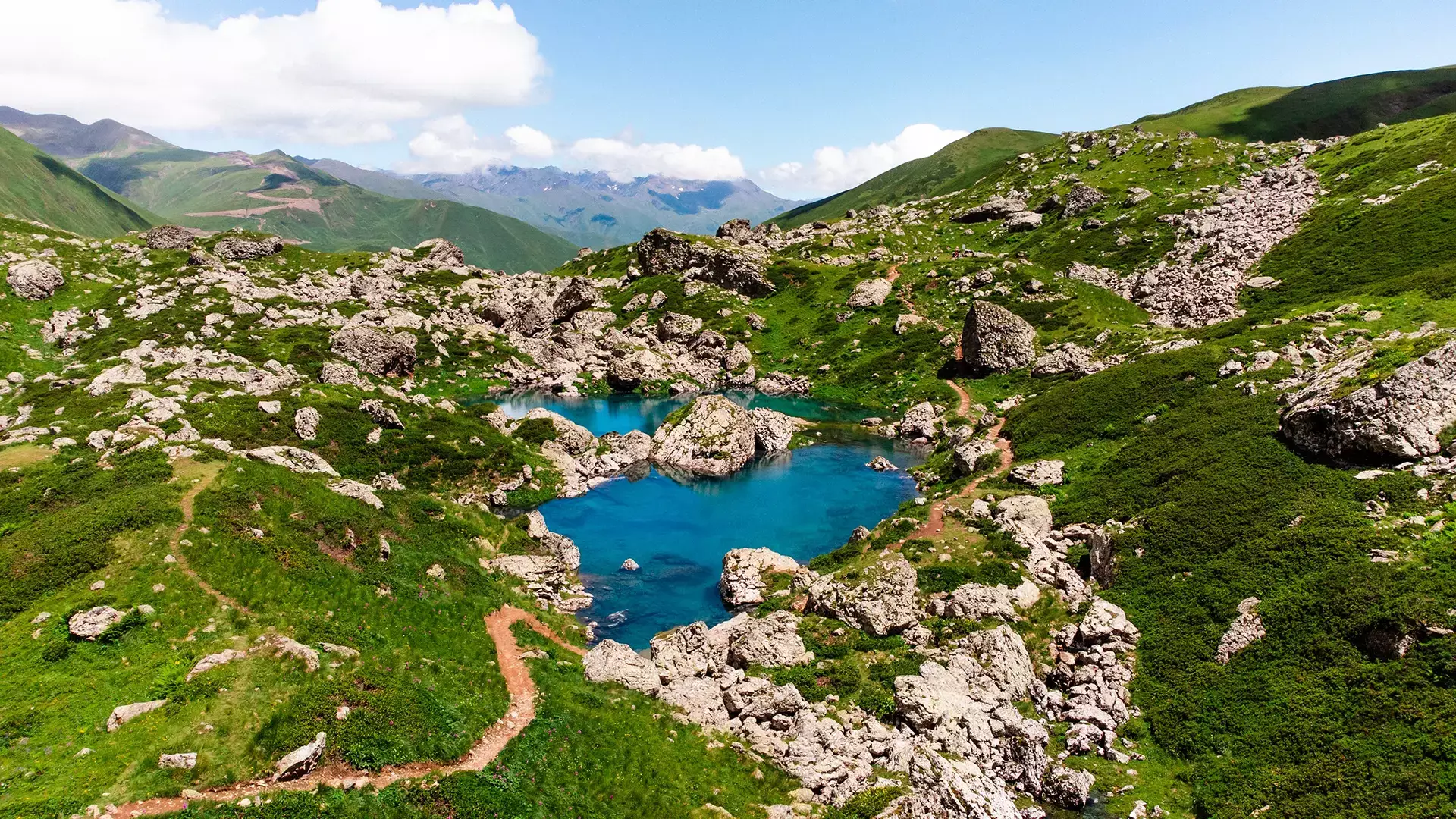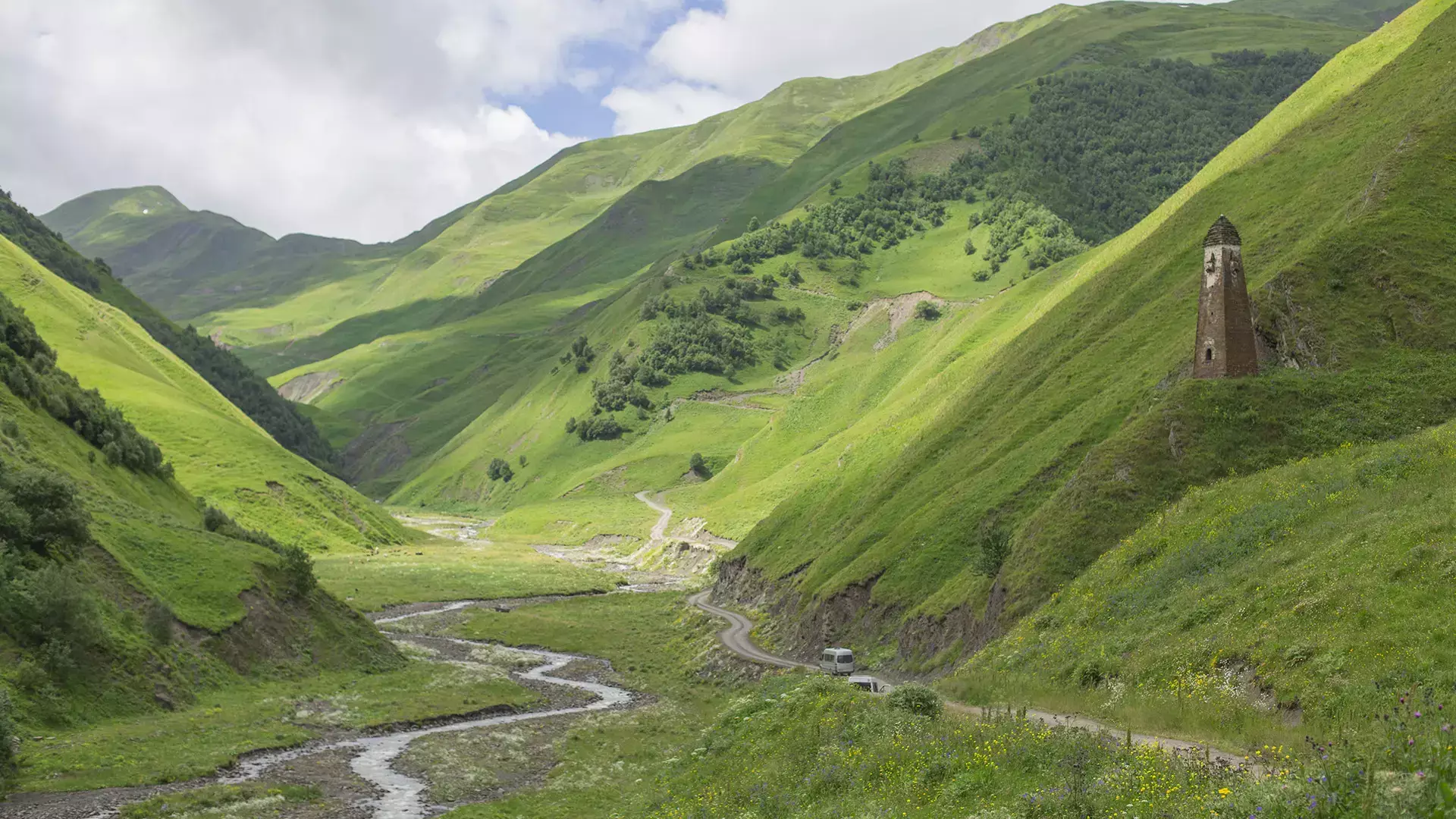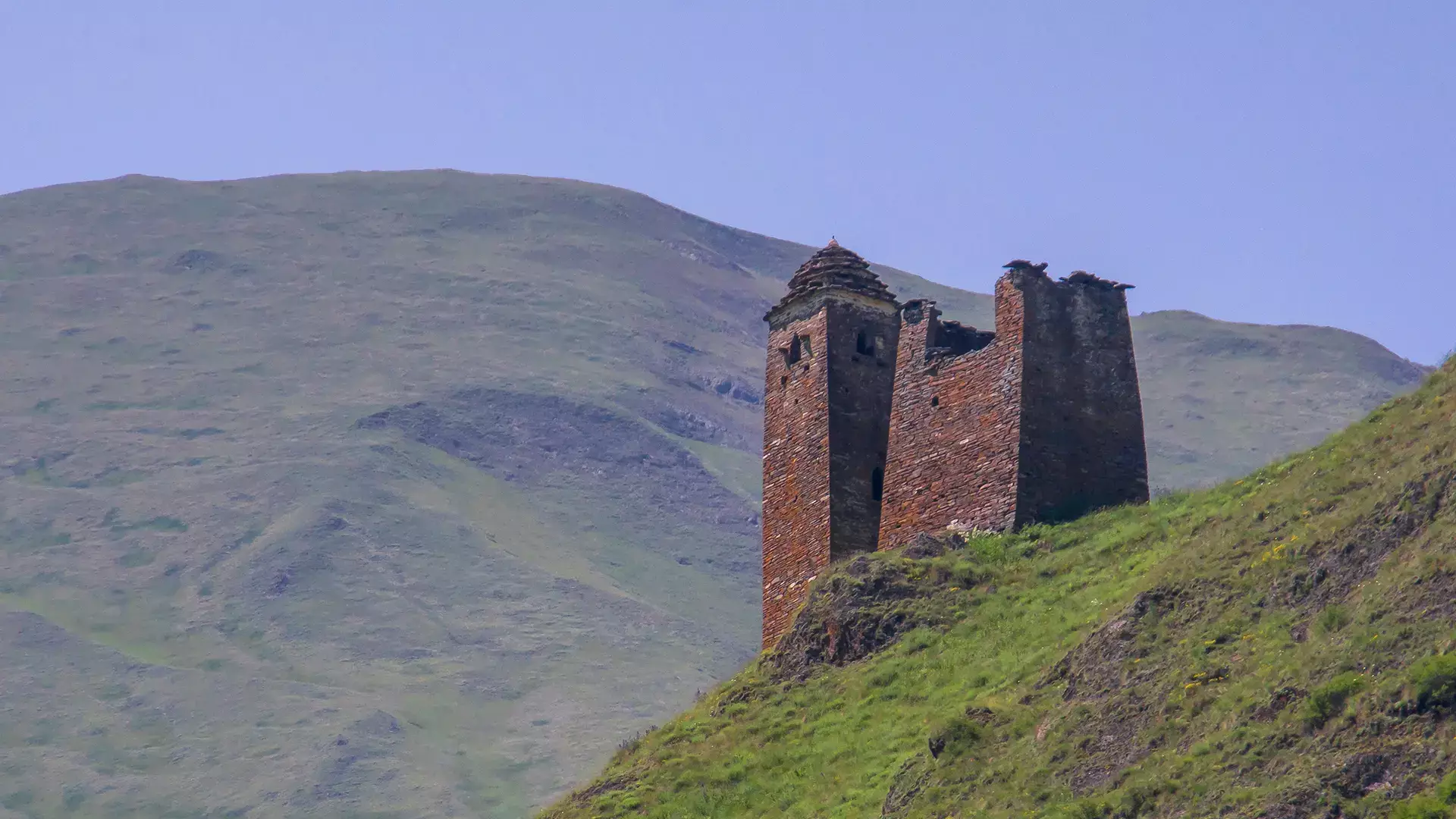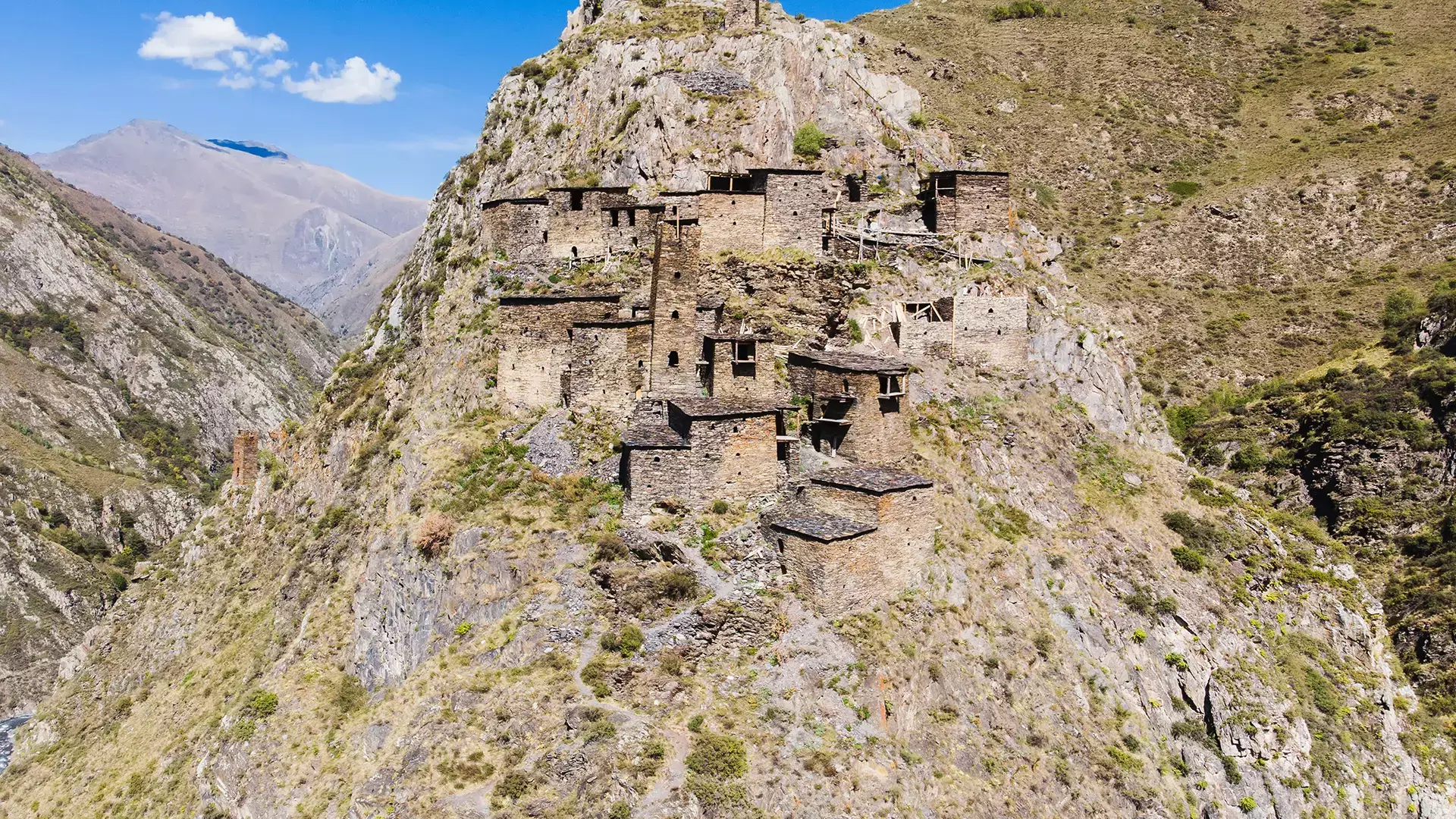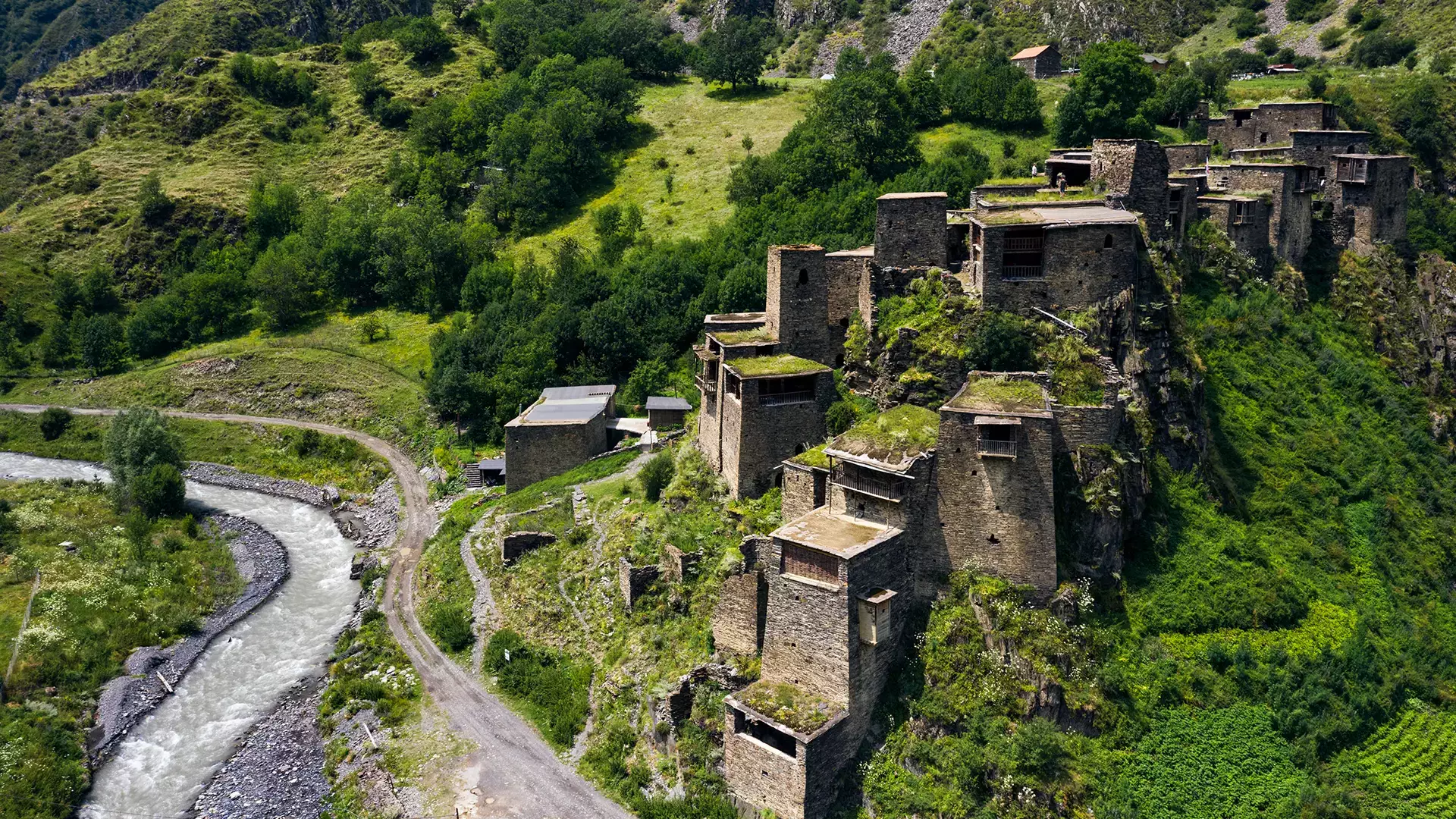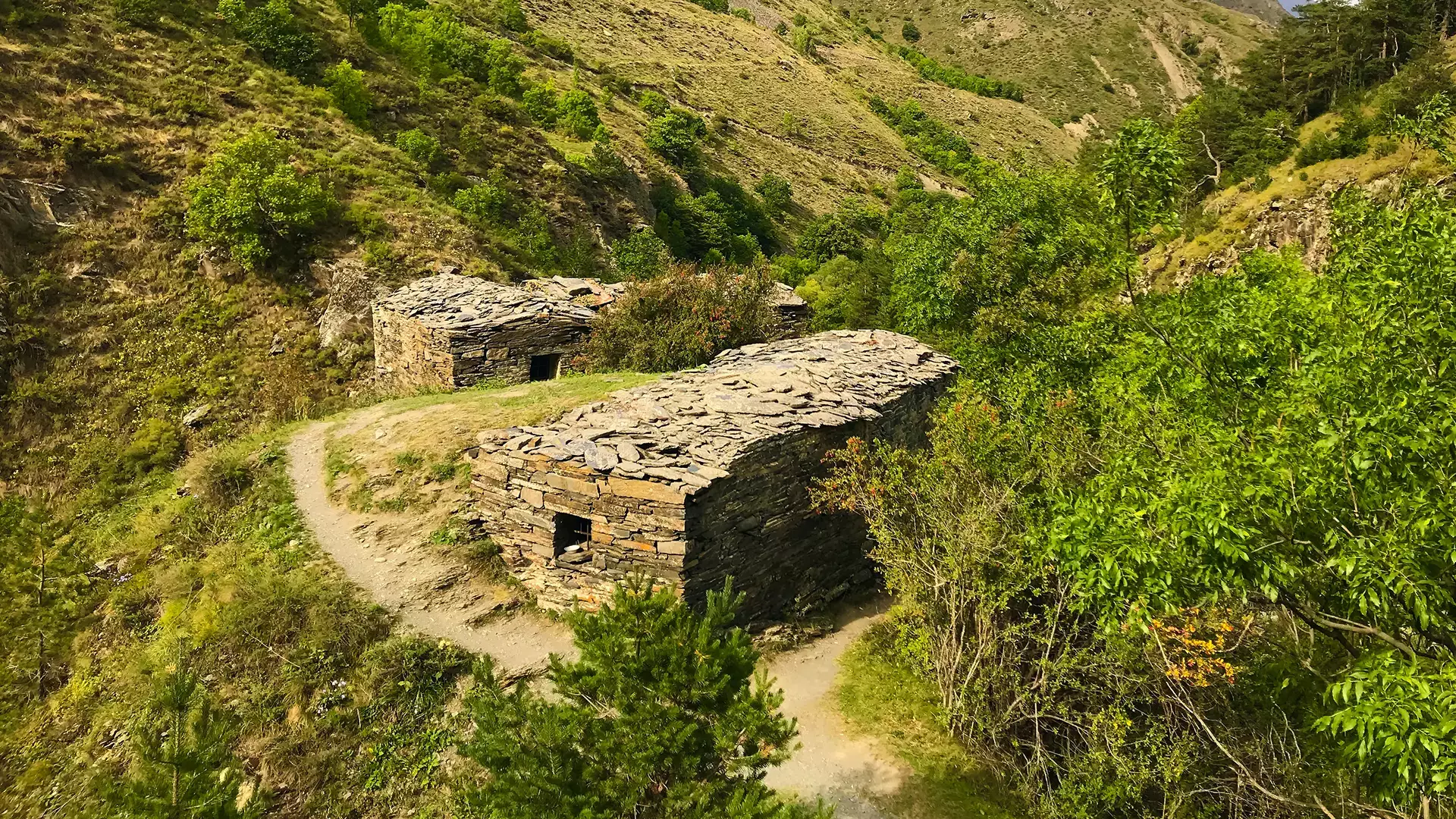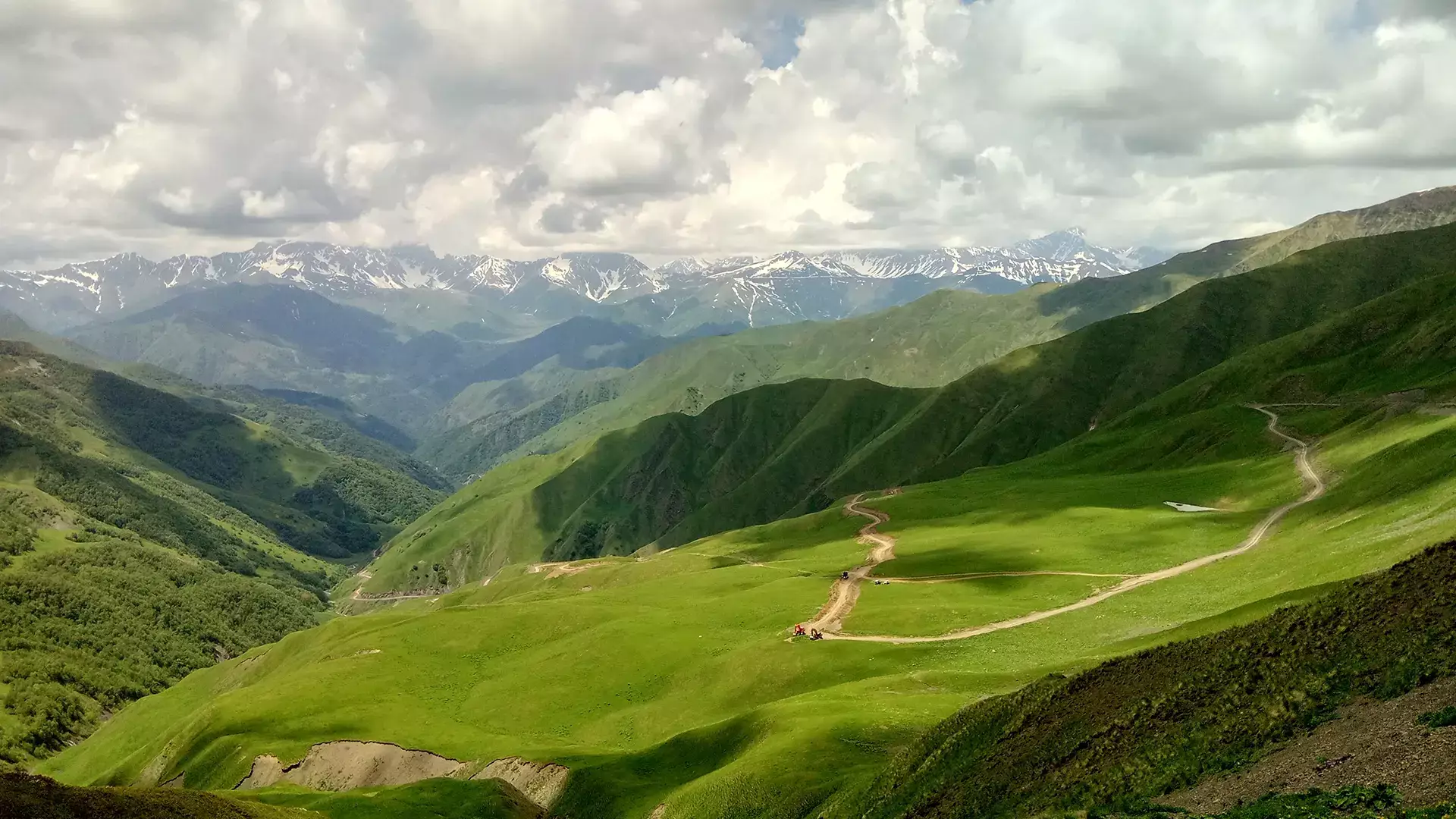Khevsureti: The Must-See Attractions
The region of Khevsureti is known for being among the most challenging terrains in the country, characterized by deep gorges and steep slopes. Meanwhile, the climate in Piraketa and Pirikita Khevsureti varies significantly due to geographical differences: the southern part ranges from 650 to 2000 meters above sea level, with a relatively mild climate, while the northern part stands between 2800 and 4500 meters above sea level in the alpine zone, and has a much harsher climate.
Overall, the weather is typical for Georgia's highland regions. Winters are long and cold, while summers are short and cool. In Pirikita Khevsureti, the average winter temperatures range from -12°C to -18°C, while the average summer temperatures range from +10°C to +14°C. In Piraketa Khevsureti, winters are much milder, and summer and fall tend to be warm and sunny. Snow cover typically lasts for 4–5 months.
What is Khevsureti Like?
Historically, Khevsureti was one of the most important strategic areas in the Mtskheta-Mtianeti region. For centuries, the Khevsurs, defended Georgia's northern borders while preserving a unique cultural identity. They built a reputation for their combat skills, military equipment, and steel-working techniques.
Strict customs governed the Khevsur community, and many of these survive to this day. Their religious rituals are particularly interesting: the Khevsurs are some of the most devout people in Georgia, but their Christian practices incorporate traditions from pre-Christian paganism.
In the 1950s, a large portion of the population was relocated to the lowlands, significantly altering the region's demographic landscape. However, in recent years, the development of tourism in the historic village of Shatili and other villages has breathed some life back in.
What to See in Khevsureti
Today, visitors are primarily drawn to Khevsureti for its natural wonders. The region is popular among hikers and camping enthusiasts alike. That said, Khevsureti is also rich in fascinating historical landmarks. One of Georgia’s most famous (and longest) trekking routes runs from Omalo and ends in Shatili.
Datvisjvari Pass – Marks the dividing point between Piraketa and Pirikita Khevsureti. Located at 2,676 meters above sea level, here you’ll find impressive views and historical significance — it served as a major trade and communication route with the North Caucasus for centuries. Traveling by car can be dangerous, as fog is frequent, especially in the colder months, and visibility can drop suddenly.
Abudelauri Lakes – Three colorful lakes in Abudelauri Valley at 2,600 meters above sea level. The hike to the lakes usually starts from the village of Roshka. The Blue Lake and Green Lake are close to each other, and about 7 km from the village, making them relatively easy to reach, even for novice hikers. The White Lake is further away, at the base of Chaukhi Mountain, and requires more hiking experience.
Lebaiskari Fortress – A traditional Khevsur fortress, and a fine example of medieval Georgian mountain architecture. It was built in the 16th-17th centuries and is located near the village of Lebaiskari, on the road to Shatili. The fortress once controlled access to one of Khevsureti's main roads and played an important part in the village’s defense.
Kistani Fortress – In the Middle Ages, the village-fortress of Kistani was a complex of residential and defensive structures. Built on a high mountain, its unique architecture was shaped by difficult terrain: the houses were constructed using a “terraced” approach, with the roof of one house serving as the terrace for the neighboring one, and the outer walls serving as the village's defensive perimeter. Today, mainly ruins remain, with the Kistani Fortress itself is one of the best-preserved structures.
Mutso – Another historical village-fortress and even better preserved, this complex is built on a steep cliff and consists of residential towers and military structures. Mutso once comprised 40 houses arranged on vertical terraces, of which four defense towers (the most famous being the Tower of Torghva) and several residential houses have survived. Recently, intense restoration work was carried out, with the surviving structures almost completely restored to their original form.
Shatili – More of a large medieval fortress than a village, the complex consists of around 60 towers connected by narrow streets and passages. The entire village is linked to the outside world by only one narrow road. Shatili is especially notable for its architecture and has massive historical significance. It’s currently on UNESCO's World Heritage Tentative List.
Anatori Crypts – An archaeological site near Shatili, this crypt complex consists of several stone structures, with tombs from the 11th-15th centuries. Mummified remains and fragments of clothing can still be seen in the crypts. According to legend, when a plague broke out in the village, strict quarantine was declared to prevent the spread of disease across Khevsureti. When villagers felt death approaching, they would willingly walk to the crypts and await their fate.
Khevsur Cuisine
The backbone of Khevsur cuisine. However, unlike most Georgians, the Khevsurs do not eat pork; they primarily eat beef and lamb, and the famous Khevsur khinkali is usually made with a mixture of these two.
Among dairy products, cheese and clarified butter reign supreme. One traditional dish is Khevsur-style Khavitsi, a mixture of clarified butter and flour. Clarified butter is also used to make kuserbo, where it is melted into cheese or a cheese-potato mix. Dambalkhacho (a type of strong moldy cheese) is also common in the region, even though it is typically considered a Pshav specialty.
Like every region in Georgia, Khevsureti has its own distinctive filled pastries. Kadiskveri is similar to Svaneti’s Kubdari (a type of meat-filled pie baked on a pan), but the meat is distinctively flavored with a local variety of wild garlic.
The most popular drink is beer. Khevsur beer is unique due to its special brewing process. First, it is brewed from barley or wheat flour, then filtered, mixed with mountain herbs, and brewed again, to create the signature flavor and aroma.
How to Get to Khevsureti
Usually, travelers go to Tbilisi before heading to Khevsureti, even if they’re traveling from other major cities like Batumi or Kutaisi. Mainly because the most convenient road to Khevsureti starts from the capital. Public transport runs from here too, albeit on a limited schedule.
The Tbilisi-Shatili marshrutka (minivan) departs from Didube bus station twice a week, on Wednesdays and Saturdays at 10:00 AM. It returns to Tbilisi on Thursdays and Sundays at 12:00 PM. The journey takes about 5 hours. The marshrutka operates seasonally and is usually unavailable in late autumn and winter, so be sure to check the schedule in advance.
If traveling by car, follow the Mtskheta-Stepantsminda-Larsi highway from Tbilisi, then turn toward the Zhinvali Reservoir and take the road to Barisakho. The drive should take about four hours.
Cookie Policy

